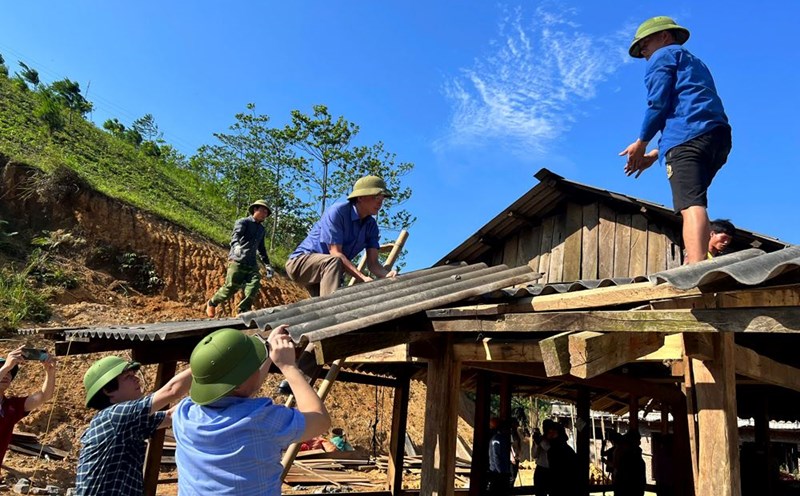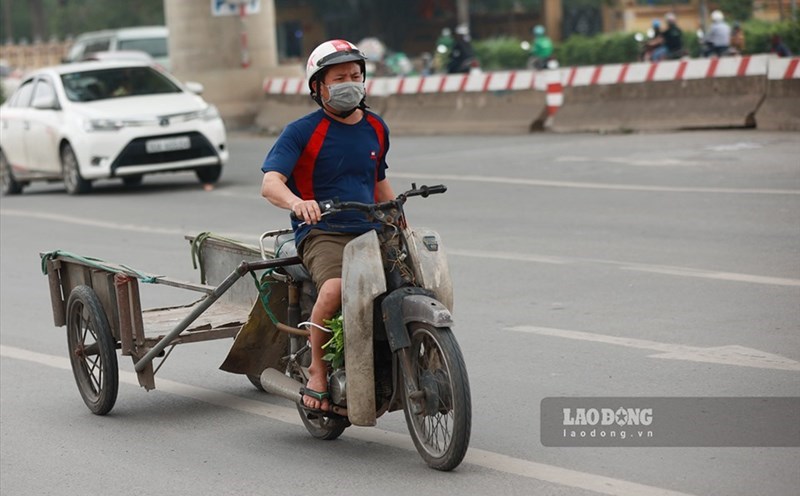The family of Mr. Dang Van Tuan, Na Ri commune, Thai Nguyen province (formerly Bac Kan province) is a disadvantaged household, supported by the province with 60 million VND to eliminate temporary houses.
To have a spacious house to replace the old, patchwork and degraded house, however, when the price of materials increased rapidly, Mr. Tuan had to adjust the design to reduce costs.
"The floor was originally intended to be higher than the road surface, but now it has to be lowered to reduce costs. bricks used to be only 1,400 VND for the whole road, now it is 2,200 VND, not to mention sand, stone, xi... all increased. If we don't change, we won't have enough money," said Mr. Tuan.
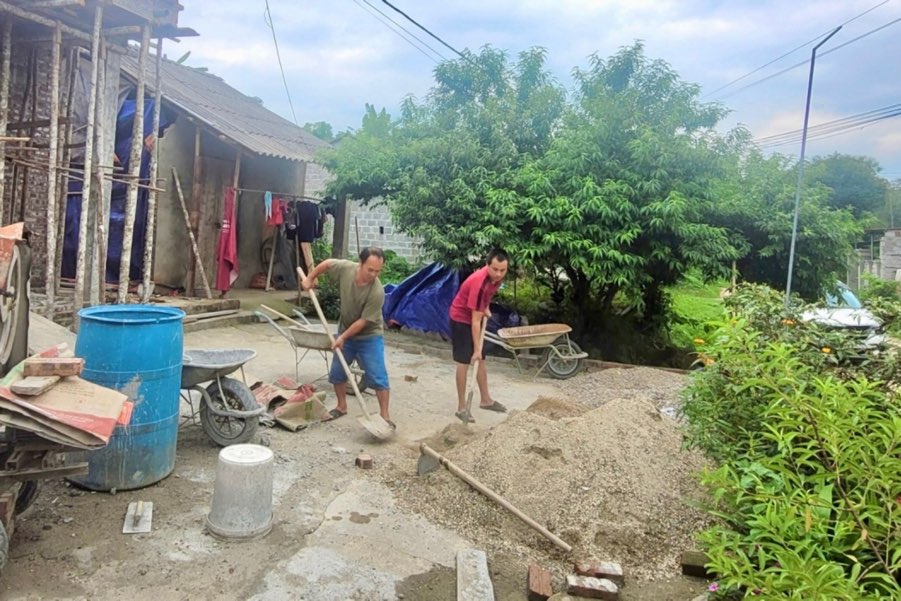
Right next to it, Mr. Ly Trieu Huynh's family is also building a new house. As a poor household, he was supported and planned to spend more than 100 million VND to build. But when the price of bricks and sand increases, the counterpart becomes too much.
"The price is constantly increasing, but the plan I have planned from the beginning is very close. Maybe my parents have to borrow more to finish. The old house cannot be lived in, but building a new house is a hundred-faced problem, Mr. Huynh shared more.
In many remote communes of the old Bac Kan province, the problem of material prices is making it impossible for many households to proactively build despite support.
Tuynel tiles are the most common type, used to be only about 1,100 VND/piece, now at 2,200 VND. The cost of transportation to remote areas has increased the cost.
Meanwhile, for poor households, additional loans are not easy to manage, especially when costs are increasing.
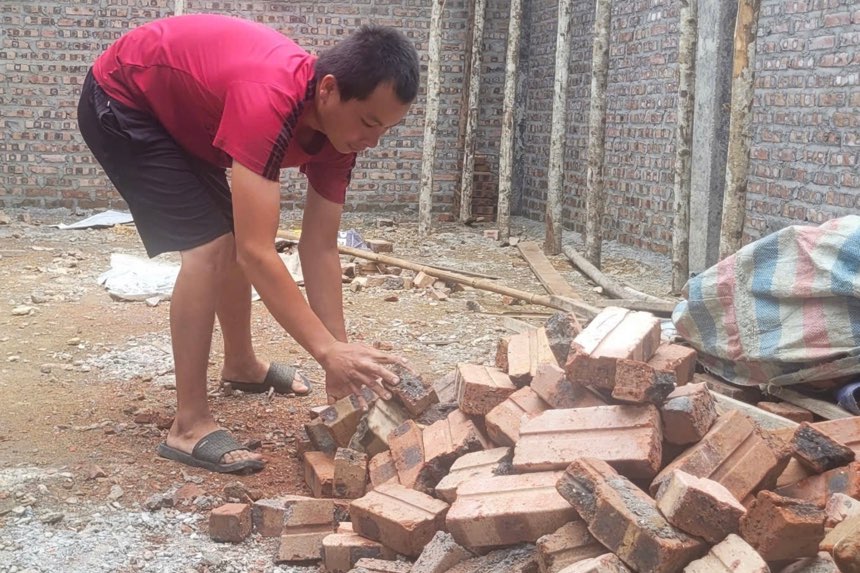
Previously, information from the People's Committee of Xuan Lac commune (now Nam Cuong commune) said that households with dilapidated houses were mostly poor, and had difficult economic conditions, so they could not build their own houses.
When supported by the State, people often have to borrow more to be able to build a house.
However, the high price of construction materials makes it more difficult to complete the house. For many households, the loan amount, despite efforts, is still difficult to cover actual costs.
According to the plan, Bac Kan province (old) will eliminate more than 4,700 temporary and dilapidated houses in 2025, starting construction in June and completing in October. However, fluctuations in construction materials are a major obstacle to the set progress.
Previously, according to Mr. Nong Thanh Nghe - Chairman of the Vietnam Fatherland Front Committee of Na Ri district, Bac Kan province (old), the increase in material prices is the biggest obstacle at present.
Although households are still trying to implement according to plan, if there is no additional support source, it will be difficult to complete on schedule.
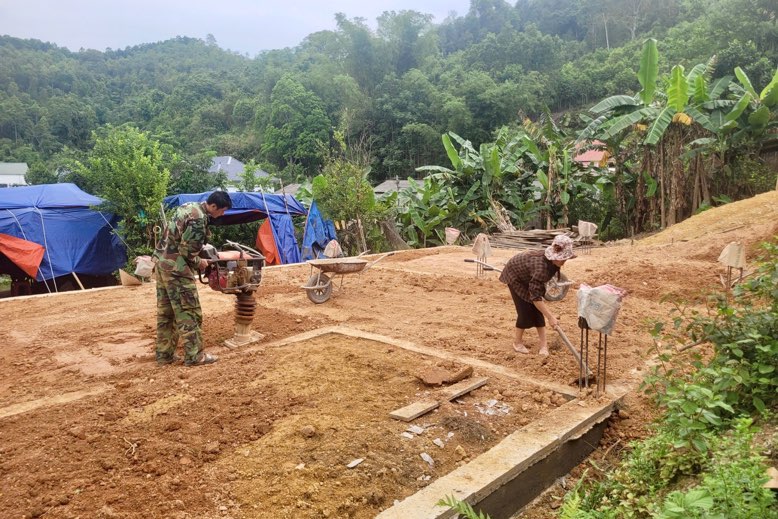
Currently, the locality is continuing to mobilize organizations and benefactors to join hands, especially to provide additional support to households in special difficulties.
In the second quarter of 2025, the Department of Construction of Bac Kan (old) conducted a field survey, recording that the price of tuyenel at the store ranged from 1,600 to 2,200 VND/tael, while the price at some factories in the province was only from 1,050 to 1,150 VND, excluding transportation costs.
The huge price difference between the place of production and the price reaching the people needs to clarify the cause and have a plan to make the program to eliminate dilapidated houses truly effective.
Before the merger, Bac Kan province had 6,008 households subject to support for temporary and dilapidated houses (1,357 households did not need support even though they had been mobilized).
The number of households eligible for support to eliminate temporary and dilapidated houses in 2025 is 4,651 households (total allocated budget is 274.65 billion VND).
Of which, the number of households that have started and completed construction is 3,922, reaching 84.3%; the number of households that have not started construction is 729; 713 households have been eliminated from temporary and dilapidated houses for poor and near-poor households.

